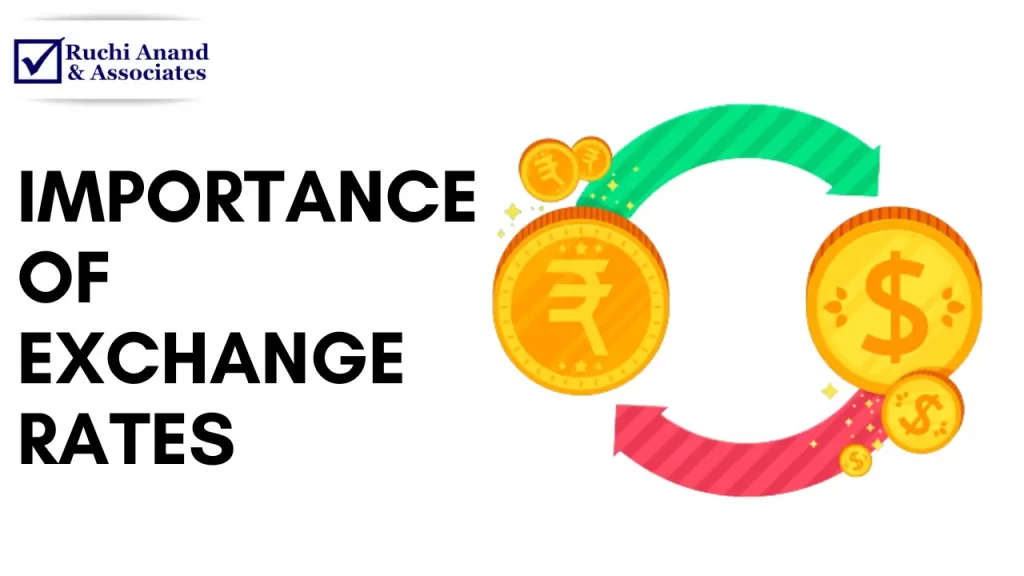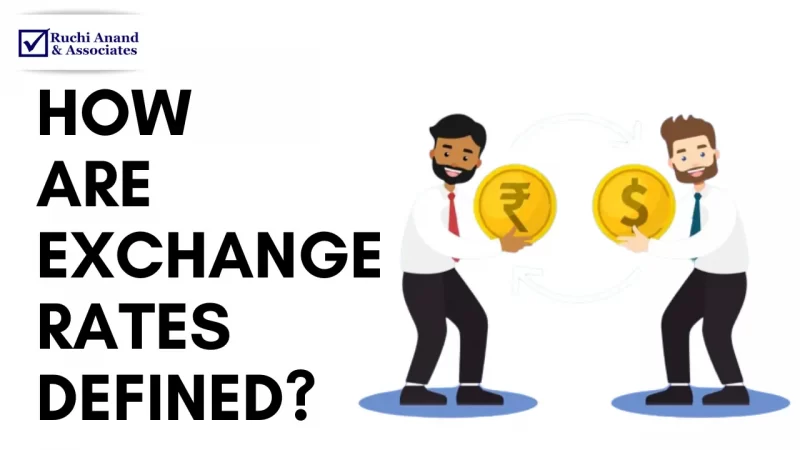HOW ARE EXCHANGE RATES DEFINED?
What is an Exchange Rate?
A change price is the fee at which one foreign money is exchanged for any other forex. Exchange prices are determined with the aid of forces of supply and demand, which are in turn inspired by means of a number of factors.
- Inflation
- Interest Rate
- Government Debt
- Public Debt
- Import and Export
- Economic Growth/Health
- Government Intervention
- Terms of Trade
- Speculation
- Current Account Deficits
Exchange prices are very vital to change and commercial enterprise on the grounds that no country or commercial enterprise is a separate entity – all nations interact in change, and this alternate price plays a completely critical position inside the import and export of products and offerings.
Types of Exchange Rate
Fixed Exchange Rates:
A fixed exchange rate is implemented by a government or central bank that ties the official exchange rate of one country to the price of another country, currency or gold. The objective of a fixed exchange rate system is to keep the value of the currency narrow.
Fixed prices provide greater certainty to both exporters and importers. Fixed interest rates also help the government to keep inflation low, which in the long run keeps interest rates down and Shoot up trade and investment.
Most of the major industrialized countries have floating monetary systems, where the price flow in the foreign exchange market (foreign currency) determines its face value. This miracle began for these countries in the 1970s in the early years when developing countries continued with fixed income.
Flexible Exchange Rate:
In a weak exchange rate system, the value of a country’s currency depends on the interaction between demand and supply in the foreign exchange market. This system, also known as exchange or free exchange, operates without any government interference.
The exchange rate fluctuates randomly in response to market forces without direct intrusion from the government or central bank. Various entities including banks, corporations and other institutions are actively involved in buying and selling foreign currencies in the foreign exchange market, allowing for constant exchange rate fluctuations based on changes in factors of demand and supply.
The ratio of foreign exchange demand to supply is called the equilibrium exchange rate, normal exchange rate, or foreign exchange equilibrium.
Floating Exchange Rate:
Managed floating exchange rates, also known as hybrid systems, combine the elements of a fixed and flexible exchange rate. In this approach, market forces primarily determine the amount of foreign exchange, leaving it free-floating.
However, when the domestic currency appreciates or depreciates sharply, the central bank intervenes to stabilize the exchange rate. Under this system, the central bank acts as the primary buyer and seller of foreign exchange to manage exchange rate fluctuations. When the exchange rate appreciates, the central bank sells foreign exchange to bring it down, and iniquity reverse.
The purpose of this operation is to protect the interests of importers and exporters. To accomplish this task effectively, the central bank monitors foreign exchange reserves, ensuring that the exchange rate remains within its target range.
Importance of Exchange Rates

Exchange rates are captured by many economic factors and variables, and can fluctuate for a variety of reasons. The factors that cause exchange rates to fluctuate include:
1. Interest Rates
Changes in interest rates effect currency price and alternate charges. All else being equal, a higher interest price in a domestic U.S. Will boom the call for a domestic foreign money for the reason that more foreign buyers will are looking for to make investments at the higher interest fee, thereby making an investment foreign capital into the domestic forex. However, in exercise, it’s far balanced out with the aid of inflationary pressures.
2. Inflation Rates
Changes in inflation costs effect forex fee and change charges. All else being equal, a higher inflation charge in a domestic USA will lower the call for the home currency since the value of the foreign money depreciates very quicker over the years than different foreign currencies.
3. Government Debt
The amount of loans from the federal government. It also affects the value of currency and the exchange rate because a highly grateful country is less likely to have large amounts of foreign exchange, leading to inflation This puts downward pressure on the domestic currency and reduces its value at the exchange rate.
4. Political Stability
The political environment in a country affects currency prices and exchange rates because a country with greater political turmoil is less likely to attract foreign investors. Political uncertainty poses a higher risk for investors, as they do not know if they will be bankrupted secured by fair market practices or complex regulatory framework.
5. Export or Import Activities
A country’s exports or imports gain the value of the currency and the exchange rate. A domestic country that exports more than it imports will have a higher demand for its currency, and thus, will see its exchange rate appreciate relative to other foreign currencies.
6. Recession
A country that goes into bankruptcy is less attractive to foreign investors. First, due to the increased risk of investing in an economy with weak monetary outlook. Second, when the economy contracts, interest rates generally fall, reducing domestic demand for foreign exchange.
7. Speculation
If for any reason a country’s currency is expected to appreciate, investors will demand more of the currency to earn profits based on that expectation there can be an immediate increase in the demand for domestic currency relative to foreign currencies.
Conclusion
Exchange rates are just the price of one currency in relation to another currency. For example, the exchange rate among the US dollar and the Indian Rupee is currently around 83.10 INR to the dollar. This means that it costs $1 to buy 83.10 INR.
Exchange rates are determined by a number of aspects, including economic solidity, interest rates, political events, and market emotion. Countries with solid economies incline to have solid currencies, as investors are more likely to invest in their economies. Higher interest rates also incline to invite foreign investment, which makes a currency more valued. Political instability can lead to a decline in a currency’s value, as investors become more careful. And traders and investors also play a role in major exchange rates, as they buy and sell currencies based on their outlooks about future economic act and other aspects.
Exchange rates can have important impact on entities and businesses. For example, a weaker US dollar would make it more costly for Americans to purchase imported goods, such as India cars and India electronics. But, it would also make it cheaper for foreign tourists to visit the United States.
Businesses that involve in international trade are mostly open to exchange rate risk. If a company exports goods to India, for example, a decline in the value of the INR would make its goods less competitive in the Indian market.
Governments and central banks also monitor exchange rates closely. They may intervene in foreign exchange markets to buy or sell their own currency in order to influence the exchange rate. For example, if the US dollar is getting too strong, the US Federal Reserve may sell US dollars in order to weaken the dollar’s value.
Exchange rates are a complex topic, but they are essential for understanding the global economy. By understanding how exchange rates work, we can better understand the world around us and make better decisions in our own lives.

